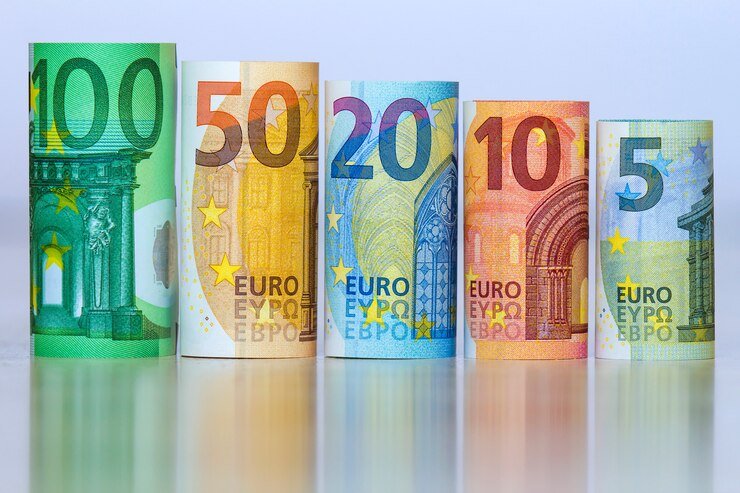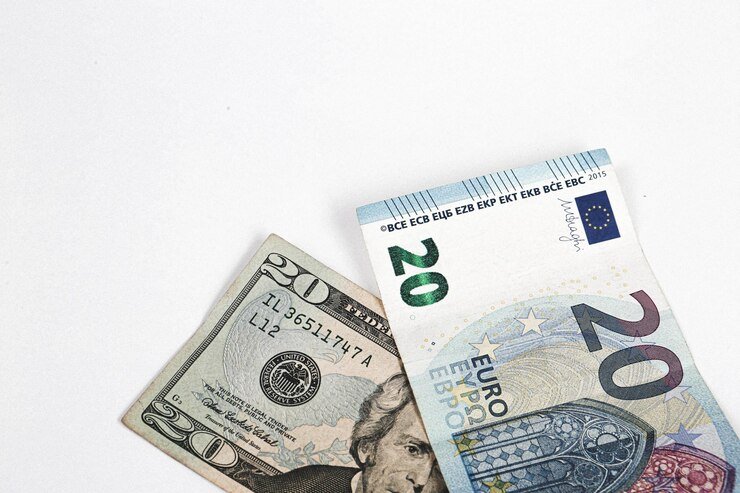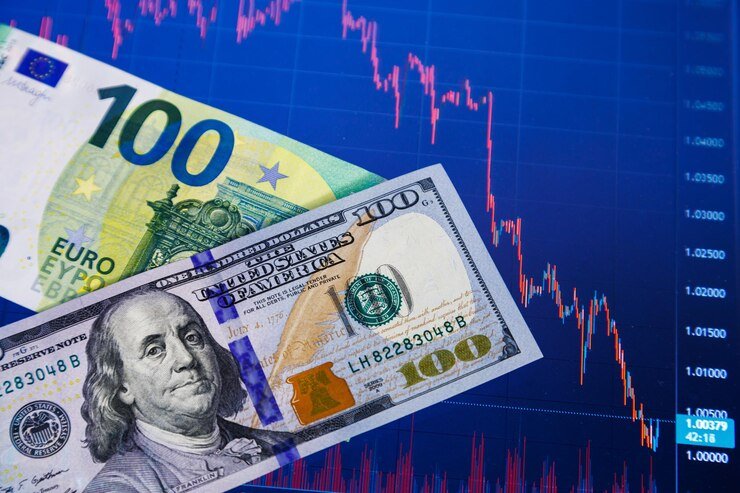EUR/USD Price Analysis: Bearish Reversal Imminent as Upward Wedge Pattern Indicates Weakening Momentum
The EUR/USD currency pair is low-key around the 1.0500 region, ranging in a rising wedge pattern, which points towards an impending bearish reversal. Although the 14-day RSI is close to 60, reflecting sustained bullish momentum, a reading above 70 may set off an overbought correction. The pair is currently positioned above both the nine-day and 14-day EMAs, which supports short-term strength. But a fall below the key support levels of 1.0453 (nine-day EMA) and 1.0436 (14-day EMA) would seal a bearish move, which could take the pair to 1.0177, its lowest since November 2022. On the higher side, resistance is at 1.0540, with a breakaway likely to take the pair to the two-month high of 1.0630. KEY LOOKOUTS • EUR/USD trades in a rising wedge formation, which could portend a possible bearish reversal if the downward pressure gathers strength and important support levels are breached. • The 14-day RSI fluctuates close to 60; an increase above 70 can be an indication of overbought, and it can lead to a pullback correction in the pair. • The nine-day EMA of the pair at 1.0453 and 14-day EMA at 1.0436 are the crucial support levels—a break below could seal further downside threats. • The higher limit of the rising wedge at 1.0540 is still a significant resistance level—a break above might push the pair towards 1.0630 highs. The EUR/USD pair continues to be at a pivotal point, ranging about 1.0500 in a rising wedge pattern, which could indicate a bearish reversal if bearish momentum picks up. The 14-day RSI close to 60 indicates ongoing bullish support, but a move above 70 would signal overbought levels, raising the probability of a corrective pullback. The key support levels are at 1.0453 (nine-day EMA) and 1.0436 (14-day EMA), and a clean break below this level may further speed losses to 1.0177, its lowest since November 2022. On the other hand, a breakout above 1.0540, the top of the rising wedge, may solidify the bullish bias, moving the pair to the 1.0630 resistance level, which was last visited in early December. EUR/USD is quoted at 1.0500, trending within a rising wedge formation, suggesting a bearish reversal if a break of significant support at 1.0453 occurs. A reading near 60 in the 14-day RSI indicates bullish strength, but above 70 it might trigger a pullback. Breaking above 1.0540 can advance the pair towards 1.0630, solidifying a bullish trend. • EUR/USD is in a rising wedge, suggesting a bearish reversal if downside pressure picks up. • The nine-day EMA at 1.0453 and 14-day EMA at 1.0436 serve as crucial support; a break below could accelerate losses. • The upper boundary of the wedge at 1.0540 acts as a key resistance—breaking above it could trigger further bullish momentum. • The 14-day RSI suggests continued bullish strength, but a move above 70 may indicate overbought conditions, leading to a correction. • A decline below 1.0436 could turn momentum on the downside and drive the pair to 1.0177, its low since November 2022. • Should EUR/USD cross above 1.0540, it will test the two-month high at 1.0630, supporting a bull scenario. • The pair trades above its EMAs, supporting short-term bullishness, though falling volume within the wedge is an indicator of weakening buying force. The EUR/USD is in the limelight as market players closely monitor its trajectory in the wake of global economic developments. Investor moods are determined by several factors, such as geopolitical events, central bank actions, and macroeconomic announcements. The performance of the European economy, particularly regarding inflation and growth indicators, has a strong bearing on the outlook for the euro. At the same time, the U.S. dollar continues to be a dominant force, fueled by economic data, interest rate expectations, and general market sentiment. The interaction of these underlying factors decides the strength and stability of the currency pair. EUR/USD Daily Price Chart TradingView Prepared by ELLYANA Market sentiment is also influenced by investor sentiment, risk appetite, and external factors such as trade relations and monetary policy announcements. Any changes in world financial conditions have a profound effect on exchange rate behavior. Traders and investors track these variables to estimate possible movements and make sound judgments. Consumer spending, employment patterns, and economic stability in both regions also play a role in long-term trends in the EUR/USD currency pair. Knowledge of these factors aids in evaluating market conditions outside short-term volatility, giving a better view of currency market movement. TECHNICAL ANALYSIS The EUR/USD currency pair is now trading in the form of a rising wedge pattern, a pattern that usually indicates a probable trend reversal. The pair still holds above its nine-day and 14-day Exponential Moving Averages (EMAs), representing short-term bullishness. But a breakdown below the key support levels can lead to a bearish turn. The 14-day Relative Strength Index (RSI) is at about 60, indicating ongoing bullish support, but should it rise above 70, this would indicate overbought levels, and a correction would ensue. On the upside, 1.0540 is a crucial resistance level, and a break out above it would drive the pair to the 1.0630 level, strengthening the bullish trend. Alternatively, a firm fall beneath the 1.0453–1.0436 support region would result in additional downward pressure, validating a change in momentum. FORECAST The EUR/USD currency pair is at a decisive moment with both the bullish and bearish picture on the cards. If the bullish trend prevails, the pair may break above the 1.0540 resistance level, indicating further robustness. A successful break may take it towards the 1.0630 level, a two-month high set in early December. If buying continues to increase, the next target on the upside would be around 1.0700, fueled by optimistic market sentiment and healthy economic data out of the Eurozone. On the flip side, if EUR/USD does not hold onto its present levels and breaches vital support levels at 1.0453 (nine-day EMA) and 1.0436 (14-day EMA), then it would mark a bearish reversal. A decisive fall below this area can propel losses further to





